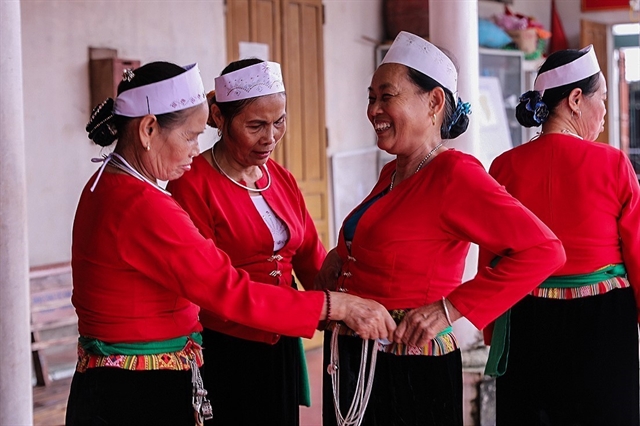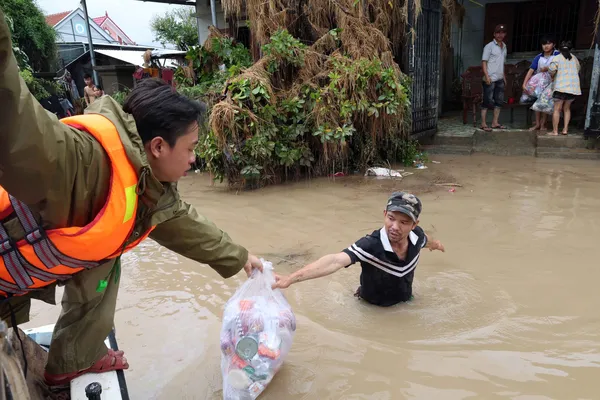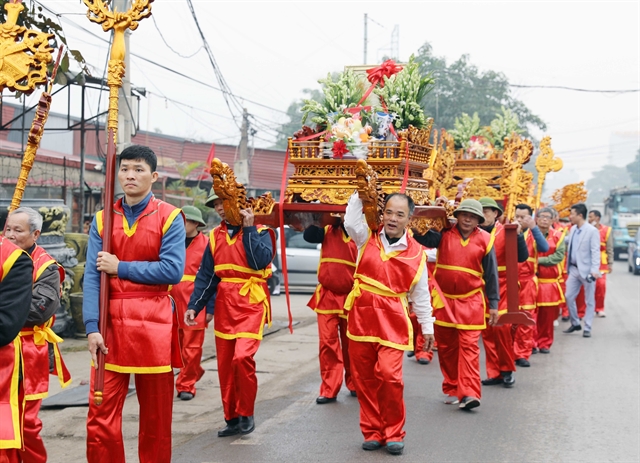 Life & Style
Life & Style


|
| The Minh Nong Ward People's Committee procession to the Tich Dien altar in Phú Thọ Province. VNA/VNS Photo Tạ Toàn |
PHÚ THỌ — The tourism sector in the northern province of Phú Thọ has set to build key product chains for the 2025-2030 period based on the role, function and development axis of each local area.
After merging with the provinces of Vĩnh Phúc and Hòa Bình, Phú Thọ Province has a new capacity for socio-economic development, particularly in its tourism sector, which shows promise due to high connectivity, integration and growth potential.
Head of the Tourism Management Office under the provincial Department of Culture, Sports and Tourism Đặng Tuấn Hùng said: "After the merger, Phú Thọ Province has the driving force of high-quality infrastructure and tourism, which is rich in potential with historical, cultural and natural landscape advantages, to become a centre of spiritual cultural tourism and resort eco-tourism."
According to the official, spiritual cultural tourism is a product of the 'Ancestral Land', which has a series of destinations recreating historical cultural spaces and folk beliefs. These include the Hùng King Temple, Ba Vì, Thanh Thủy and Hòa Bình, associated with the legend of Sơn Tinh and Thủy Tinh, Saint Tản Viên Sơn and the worship of Việt Nam's Mother Goddess.
The province continues to develop local tourism products exploring cultural identity, traditional arts, customs, ethnic costumes and villages representing the Mường, Thái, Dao, Tày and Mông ethnic communities, including Lác Village in Mai Hạ Commune, the Hang Kia, Chà Đáy and Pà Cò villages in Pà Cò Commune, and Sưng Village in Cao Sơn Commune.
Vân Sơn Commune's Chiến hamlet and other localities near Hòa Bình Lake, Xuân Sơn National Park, Long Cốc, Mỹ Lung, Trung Sơn, Bạch Hạc and Hùng Lô also offer many unique experiences to tourists.
For resorts and eco-tourism, the province has focused on developing a product chain connecting hot mineral water sources like Thanh Thủy, Kim Bôi and Đại Lải and boosting high-class resort services, including health care, spas and healing with nature.
In addition, the locality is working to develop MICE tourism products in urban areas with a system of high-class hotels and high-quality utility services, combined with organising regional, national and international events.
Other eco-tourism products, including physical activities like adventure sports, trekking, cycling, mountain climbing and rowing, are being developed with tours to national parks and special natural tourist attractions. These include Xuân Sơn National Park, Tam Đảo, Ao Châu, Ao Giời - Suối Tiên, Đại Lải Lake, Xạ Hương, Hòa Bình Lake, Thung Nai and Mai Châu.
The province is focusing on exploiting the advantages of its traditional historical and cultural relic sites, such as the Hùng Temple Historical Relic, Mường Cultural Museum and Heritage Park of Vietnamese Scientists to boost education on the value of intangible cultural heritage, combined with craft villages, agricultural production and unique folk games.
According to Vũ Thị Hoài Phương, deputy director of the province's Department of Culture, Sports and Tourism, building tourism product chains is key to developing sustainable tourism, bringing in many economic, social and environmental benefits.
Phương noted that tourism product chains help enhance tourists' experience, create added value, improve competitiveness and promote tourist destinations in Phú Thọ. VNS